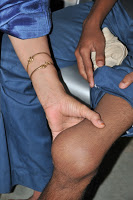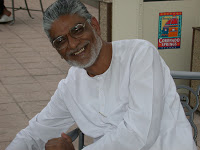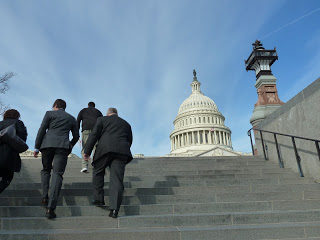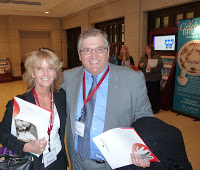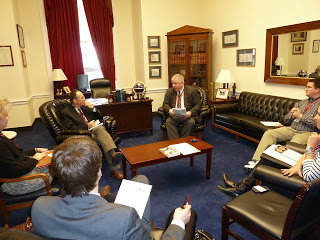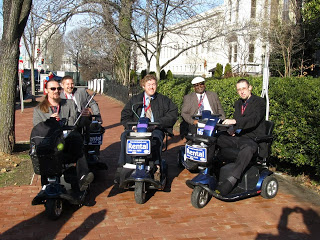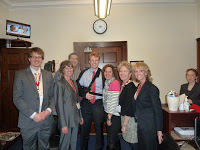March 2013
Advocacy in Action: India
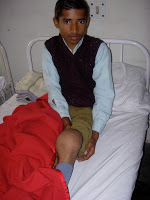 While we celebrated our own Washington Days at the end of February, and have been observing March as official Hemophilia Awareness Month, India has long been a leader in hemophilia advocacy. With a projected population of over 100,000 people with hemophilia, and only about 15,000 registered, people with hemophilia suffer and even die regularly in India. India has been lobbying its government for years, and finally the efforts are paying off, despite competition for attention from infectious disease groups, high profile crime, and politics. It’s a miracle hemophilia is noticed at all, unless you meet the people behind the advocacy. I’ve been able
While we celebrated our own Washington Days at the end of February, and have been observing March as official Hemophilia Awareness Month, India has long been a leader in hemophilia advocacy. With a projected population of over 100,000 people with hemophilia, and only about 15,000 registered, people with hemophilia suffer and even die regularly in India. India has been lobbying its government for years, and finally the efforts are paying off, despite competition for attention from infectious disease groups, high profile crime, and politics. It’s a miracle hemophilia is noticed at all, unless you meet the people behind the advocacy. I’ve been able
to work with them via Project SHARE and Save One Life and they are smart, savvy and know how to get things done.
But progress is slow. Below is a recent article about hemophilia care in the state of Maharashtra.
access to treatment. Other states such as Assam, Uttar Pradesh and Madhya Pradesh are giving free factors to patients,” said Dr Kanjaksha Ghosh, director of the National Institute of Hematology.
factor per year.
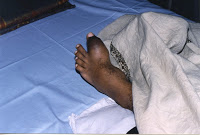 “The government has not made any move on providing free factors to us. We have earmarked Rs 50,000 from the hospital budget to treat haemophilia patients. This is, however, not enough,” said Dr Sandhya
“The government has not made any move on providing free factors to us. We have earmarked Rs 50,000 from the hospital budget to treat haemophilia patients. This is, however, not enough,” said Dr SandhyaKamat, dean of KEM Hospital.
continues to lobby the government for support. We wish them continued success.
Pulse on the Road: Albany!
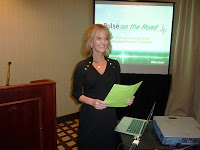
We had a wonderful visit to Albany, to meet members of the New York Coalition of hemophilia organizations. Bob Graham, person with hemophilia, helped facilitate our invitation and arrival and welcomed us Sunday, March 10. It was a small gathering of families and some clinicians, who eagerly drank in all the insurance information we presented.
Kelly Fitzgerald, associate director of government relations at Patient Services Inc. (PSI) gave everyone a 45-minute update on the Affordable Care Act. Key take-aways include:
• In 2014, everyone must have health insurance
• You may need to select your insurance in a “marketplace”
• You must read your insurance policy annually and carefully!
I then gave a talk called “The Importance of Choosing a Healthcare Plan,” infused with humorous stories of my own son’s struggle with insurance (hint: good idea to have your insurance and medical mail forwarded from mom’s house to your place over a pizza shop!) and stressing that you must pay attention to open enrollment dates. Do you know yours??
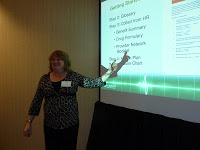
Michelle Rice, public policy director of NHF, then gave her acclaimed one hour workshop on the NHF Insurance Toolkit. We passed out workbooks and calculators and I was so impressed by the audience’s dedication! Even the teens were busy crunching numbers to see how “John Doe”‘s medical expenses add up when comparing two plans.
And finally, we had a 30 minute expert panel, so the audience could ask questions of the speakers. I learned a lot. One nurse in the audience offered this excellent piece of advice: when using medical services, instead of asking “Do you accept this insurance?” instead ask, “Are you in network with this insurance plan”? This pointed question could save you so many hassles, time and paperwork!
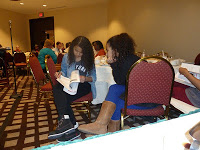
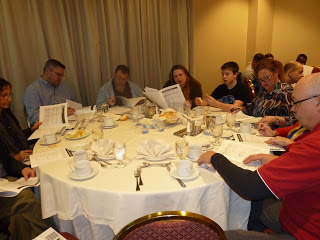
Thanks to Bob Graham, the New York Coalition, my team, our guest speakers, and all the families who attended. Deepest gratitude to Baxter Healthcare Corporation for sponsoring Pulse on the Road. For more information about health care reform, visit:
A Father’s Pursuit of Justice
of Justice by Gary William Cross.
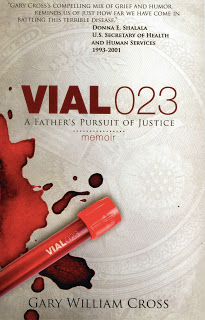
This is a poignant tale of parents who struggle raising a wonderful boy with hemophilia in the 1970s, only to learn later he has contract HIV. When their son eventually dies, the Crosses join forces with other advocates and activists to sue the pharmaceutical companies for negligence, and bring some sort of peace and truce to a fractured and angry community.
There have been many books written about the HIV scandal, most notably Blood by Douglas Starr, and And the Band Played On by Randy Shilts. There have been memoirs of loved ones who have died. But to date no one has told the story of how a select few in the hemophilia community brought down the rigid armor of big pharma, against all odds, while still mourning the loss of their sons, husbands and relatives.
The story is a memorial in many ways to Brad Cross, born on April 30, 1975 in Baton Rouge, Louisiana. Gary, his father, knew that wife Karen and her two sisters were carriers of
hemophilia.
Because of this, the parents suspected, and it was confirmed right away, that Brad had hemophilia. He was not circumcised but his heel prick bled. He was first infused with factor VIII concentrate at the six
months for a bilateral hernia surgery. By age 5, hemophilia seemed under control. The Crosses were excellent parents: Brad received treatment at the hemophilia treatment center at
Tulane University in New Orleans. Both parents worked to ensure two health insurance policies to cover mounting costs. The
family belonged to the Louisiana chapter of the
National Hemophilia Foundation.
When HIV was reported in certain groups of people, and suspected to be in the blood supply in 1985, Brad asked his HTC
hematologist point-blank whether he had AIDS. His physician did not answer, but later
informed Gary that Brad was HIV positive. The HTC had anonymously tested Brad’s
blood, and labeled the vial “Vial 023.” As the disease became full blown, Brad suffered seizures
and a gradual mental deterioration, losing
his speech and his ability to walk.
The narrative of the parents’ love for their son is gripping and evocative. It is a powerful testament to their love for Brad as well as their desire to not have others hurt that the Crosses helped to
initiate in 1991 a class-action lawsuit against four pharmaceutical providers
of the factor concentrate–Alpha, Armour, Baxter, and Bayer–a legal process
that would last 10 years and eventually include 124 families. The Crosses lost almost everything, including hope, but stayed the course, and in the end were victorious.
But not with Brad; he died at home
on April 16, 1993 just days short of his eighteenth birthday. The pharmaceutical
companies offered compensation of $100,000 to each HIV-infected individual with
hemophilia, but some opted for the class-action suit. Gary, a man with high principles, finally received personal apologies from the pharmaceutical CEOs.
As an editor and author I would be remiss if I didn’t, however, point out some problems with the book itself. Expect an amazing story; don’t expect great writing. The text suffers from lack of good editing. There are typos, misspellings of names, and incorrect or incomplete medical and scientific terms. Some of the phrases are quaint and a throw-back to the 1950s. Some will make you cringe as politically or culturally inappropriate. Nothing is documented or footnoted; on page 114 Gary asserts that the four pharmaceuticals never spoke with each other as they were trying to control market share, perhaps not realizing that legally these companies cannot speak with one another due to anti-trust laws.
I recommend trying to overlook these and focus on the story. It is remarkable and Gary Cross is a modern day hero, as are the men and women who fought beside him, many of whom were at Washington Days last week, still fighting the good fight for the future of our children with bleeding disorders.
Gary and his wife, now
retired, continue to serve their community as volunteers and fund-raisers. You can meet them at hemophilia events. Gary serves as chair of the board of Patient Services, Inc. (PSI), which provides insurance premium assistance to families with chronic disorders.
The book is available at Amazon.com. 151 pages, published by Kudu. 2012
The Power of the Common Person: NHF’s Washington Days

Don’t be nervous!
Ellen Riker told the attentive audience of first-timers at NHF’s Washington
Days on Wednesday, February 27. I was thrilled to be among the first-timers.
And I took a lot of heat for that. For all I have traveled the world, and been
involved with our community for about 24 years, I have never attended
Washington Days! I’m usually in a developing country, as winter provides mild
temperatures overseas. But now, I’m hooked on Washington Days and can guarantee I’ll be back.
Washington Days originally began by HTCs in the 1970s, to
secure more funding. Many of their services were not billable to insurance,
like those for social services and physical therapy. Soon, National Hemophilia
Foundation (NHF) and the HTCs joined forces to help advocate for the HTC
comprehensive care model and in 1975, successfully secured funding. Now, groups of patients and families with hemophilia come from all states to meet with
their representative and senators to speak with one voice about securing funding and preserving care. This year? The largest turnout yet with over 340 people ready to lobby, from nine-year-old Peyton Brush of Texas, who has hemophilia, to, well, people in my age group!
The next speaker, Joanna Gray, told us “You’ll never be
alone when you lobby.” I originally thought we had to meet with our reps solo! But we would go as a regional or state group. “And meeting with the staff is more important than meeting with a senator.” I looked at my agenda and we would have seven meetings in seven hours on Capitol Hill!
articulate young man from Michigan who serves as an aide for representative Gary Peters. He advised, “Lobbying can be intimidating, but you are the most important person there. You have a story to tell. I would prepare facts and figures when I would lobby, but the [hemophilia] camp stories I told made the biggest impression. Every representative in the House represents 600,000 people. You represent your community, which is small. You have awesome power to speak for everyone.”
And Michelle Rice, director of public policy at NHF, stunned
us by saying “We have 220 visits scheduled for tomorrow!”
or senators, and I was feeling nervous! All the speakers put me at ease, and it helped to know I was going with my local group, New England Hemophilia Association (NEHA), an experienced lobby group.
On Thursday the weather was sunny and brisk. You can do a lot of running around on Capitol Hill trying to meet with your representatives. We rehearsed how we would all present our two main concerns: Kevin Sorge, executive director of NEHA, would introduce us and outline why we were here: 1) To maintain the $4.9 million level of funding for HTCs from HRSA, and 2) to request co-sponsorship of H.R. 460, the Patient Access to Treatments Act, and more superficially, to keep hemophilia drugs from becoming tier 4 reimbursable. As tier 4 drugs, the co-pays would be outrageously high, with patients required to pay 25-33% of total costs, truly unaffordable for anyone. This could lead to abandoning prophylaxis and not allowing out children to do sports or travel.
Then I would give a quick rundown on Hemophilia 101. Showing
my photos of children overseas with swollen joints or head bleeds really drove
home how treacherous hemophilia can be. Then, Greg Price, who has hemophilia, would discuss HTCs, and share his own personal perspective on them. Diane Lima, mother of Jonathan and Andy, would share her experiences with insurance costs and the boys’ quality of life. She created very effective laminated cards on each boy that were teaching tools for the high cost of care. She left behind copies for each representative. Ian Muir, another person with hemophilia, also shared his personal story. Finally Kim DeAngelis, Ph.D., board member, summarized beautifully the main points and what we needed from the representative. It all went like clockwork!
aides were more observant, some were extremely engaged, some chatted about their
own experiences in healthcare system, but all expressed an interest in supporting
our causes. We can’t say definitely, but I think we scored a couple of co-sponsorships
for H.R. 460! I was deeply impressed by the mostly young aides: how
intelligent, poised and responsive they all were.
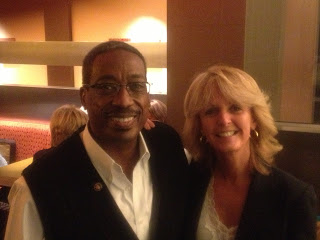
It was an intense and long day. Lunch in the Capitol was
hectic, crowded and noisy. Decorated generals huddled in talks next to chatty
tables of young people. Our feet were tired and eyesight blurry by the time we were done. We had a wonderful dinner, more speakers and then back to the bar to
complete evaluations and follow up items. Thank you emails or notes are vital.
I would be sending out copies of my book Raising a Child With Hemophilia to
each person we visited.
of this event. It went without a hitch, and everyone worked hard and yet had a
great time. I’m hooked. I’ll be back next year. And I’ll be watching the
political fallout of the budget deficit management much more carefully, now
that I’ve dipped my toe into the political waters of hemophilia reimbursement.


